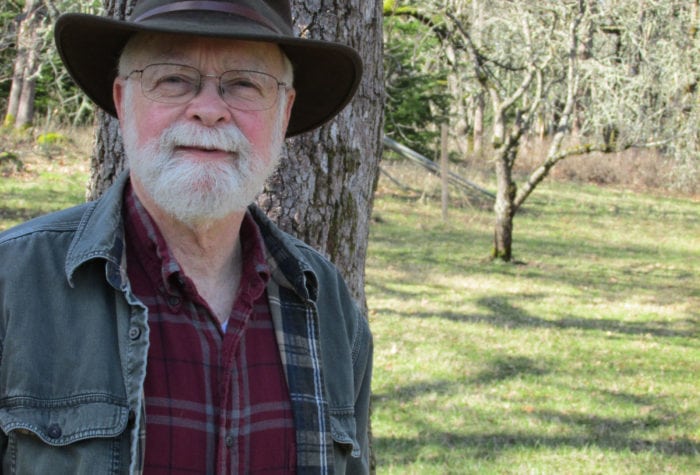About Malheur National Wildlife Refuge
Located roughly 30 miles south of the city of Burns in southeast Oregon, the Malheur National Wildlife Refuge is a vast wetlands surrounded by high desert habitat. This varied terrain provides food and cover for numerous bird species.
It is one of the most productive waterfowl breeding areas in the United States and as many as 320 species of birds – well over half of all bird species found in Oregon – have been recorded on the refuge.
What to Expect
What birds you are likely to see at Malheur depends on when you visit.
March and early April brings an influx of Sandhill Cranes, Snow and Ross’s Geese, Tundra Swans, and colorful waterfowl such as Northern Pintail, Ruddy Duck, and Cinnamon Teal. Shorebirds and neotropical migrants arrive in late April and May, and you can expect to see specialties such as American Avocet, Black-necked Stilt, White-faced Ibis, American White Pelicans, Yellow-headed Blackbird, Western Tanager and Bullock’s Oriole at this time. Some birds, such as American Bittern, Marsh Wren, Common Yellowthroat, Virginia Rail and Bobolink, can be a challenge to find, but with enough time and attention, you are likely to be rewarded with glimpse of these secretive (but vocal) denizens of the marsh.
When to Visit
March, April, and May are the best months to see the greatest numbers of birds in their most colorful (breeding) plumage. In late May, mosquitoes begin to outnumber the birds; this lasts through mid-August, but this is also when downy young fledglings of marsh species can be observed. The southbound migration peaks during September and attracts many birders. In October, hunting season begins; birds and birdwatchers become scarce until the following spring.
Where to Go
First-time visitors will not want to miss a visit to the refuge headquarters. While there, be sure to visit the Friends of Malheur visitors center and check out what birds are being seen where and pick up a bird checklist.
For a good overview of the refuge’s terrain, drive the Center Patrol Road from the headquarters down to P-Ranch at the south end of the refuge, stopping for birds along the way. Don’t miss Benson Pond, where you can usually see Trumpeter Swans, or Frenchglen, a rustic historic town that has a hotel, a small store, and a good variety of birds.
At 187,757 acres, you cannot adequately cover the entire refuge in a single day. Fortunately, many lodging and camping options are available within a half-hour of the refuge.
What to Bring
Outside Burns, restaurants are few and far between, so be sure to stock up on food, supplies and water.
Expect unpredictable weather conditions – it can snow in May! Bring plenty of clothing layers, as temperature extremes are the norm.
Bring binoculars, sunscreen, mosquito repellent and a bird identification guidebook, such as The Sibley Field Guide to Birds of Western North America: Second Edition.
Going with Expert Birders
Each spring the Harney County Migratory Bird Festival offers guided tours in and around the refuge.
Another ongoing option is to join the folks at the East Cascades Audubon Society for a birding outing.
How to Help the Refuge
The easiest way that you can help support the Malheur National Wildlife Refuge is to spend money in Harney County. Buy groceries, fill up your gas tank, grab a meal at a local restaurant or spend the night at local hotel. In small communities on the edge of protected lands, the dollars spent by birders, hikers and other eco-tourists make a difference. You can even sneak in a bit more birding, as there are some great birding opportunities in and around Burns!
You can also watch for ONDA-led stewardship trips on the refuge, or try out our independent stewardship projects.
And, you can join ONDA, or continue to support our work financially. ONDA volunteers have helped to protect, improve and maintain the Malheur National Wildlife Refuge in a variety of ways. For more than 20 years, we have led restoration projects, including fence pulls, on the refuge. We participated in the collaborative management plan adopted in 2013 that brought environmentalists, ranchers, and the Burns Paiute tribe to the table. Following the armed occupation of the refuge headquarters in 2016, we rallied over 1,000 volunteers for projects on the refuge and nearby lands.
Malheur National Wildlife Refuge is an incredible place and we hope you find this guide to birding there helpful. If you visit, we’d love to see some photos from your trip! Use the hashtag #OregonHighDesert, or email a few favorites to us at communications@onda.org.
Lodging Options
Malheur Field Station: Cabins, dormitories, kitchenettes, mobile home accommodations, and RV sites, with food service if desired, all located just 10 minutes from Refuge headquarters.
Page Springs Campground: A 36-spot campground located at the south end of the refuge at the base of Steens Mountain.
Steens Mountain Wilderness Resort: A variety of accommodation options, including tent sites, RV spots and cabins, located at the south end of the refuge.
Additional Resources
Malheur National Wildlife Refuge – Plan Your Visit
Malheur National Wildlife Refuge – Trails Brochure
Malheur National Wildlife Refuge – Map
Friends of Malheur – Spring Arrival Dates

